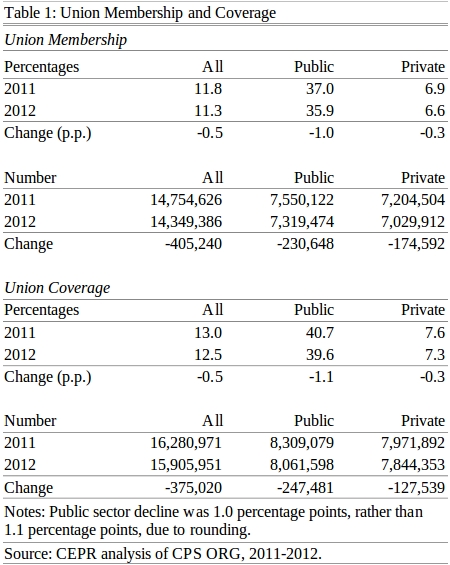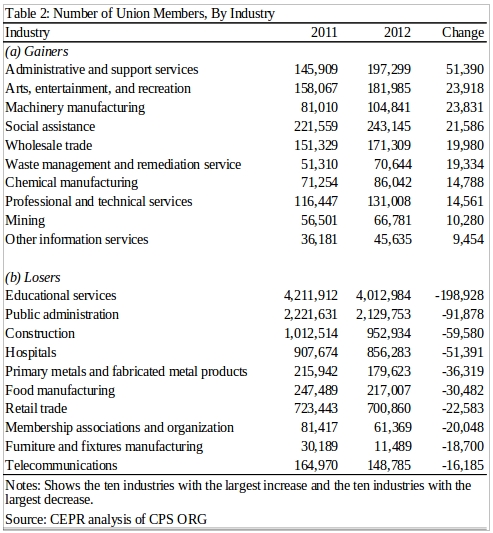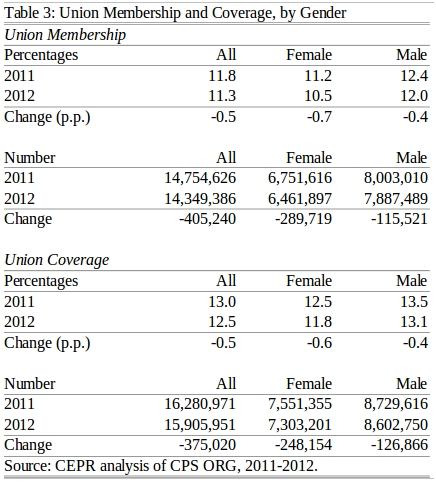January 17, 2013
On January 23, the Bureau of Labor Statistics will release its estimates of “Union Membership” for 2012. Using the same data from the Current Population Survey (CPS), we have compiled advance estimates for union membership and coverage for 2012 and find a large drop in unionization last year. Most of the losses occurred in the public sector, where union membership fell 1.0 percentage points or about 231,000 members. But, membership also fell about 0.3 percentage points, or about 175,000 members in the private sector.

By industry, the biggest gainers were: administrative and support services (up 51,000 members); arts, entertainment, and recreation (up 24,000); and machinery manufacturing (up 24,000).
But, by far, the industries experiencing the largest losses were concentrated in the public sector, with educational services (down 199,000 members) and public administration (down 92,000 members).
Construction (down 60,000), hospitals (down 51,000), primary metals and fabricated metal products (down 36,000), and food manufacturing (down 30,000) also took big hits.

The high concentration of women in teaching and public administration depressed the union membership rate for women (down 0.7 percentage points) more than it did for men (down 0.4 percentage points).

Our estimates are based on complete 2012 data and should be very close (within a tenth of a percentage point or two) of published membership and coverage rates. But, as of January 2011, the publicly available CPS data use a slightly different weighting scheme than the internal version of the data that are used at the BLS. So, our estimates of the numbers of unionized workers will likely differ slightly from the final published numbers.
Each table shows union membership (the share of employees who are members of a union) and union coverage (the share of employees who are covered by a union contract, since some workers are covered by a union contract but do not belong to the union). Some of the year-to-year changes are affected by rounding error.







